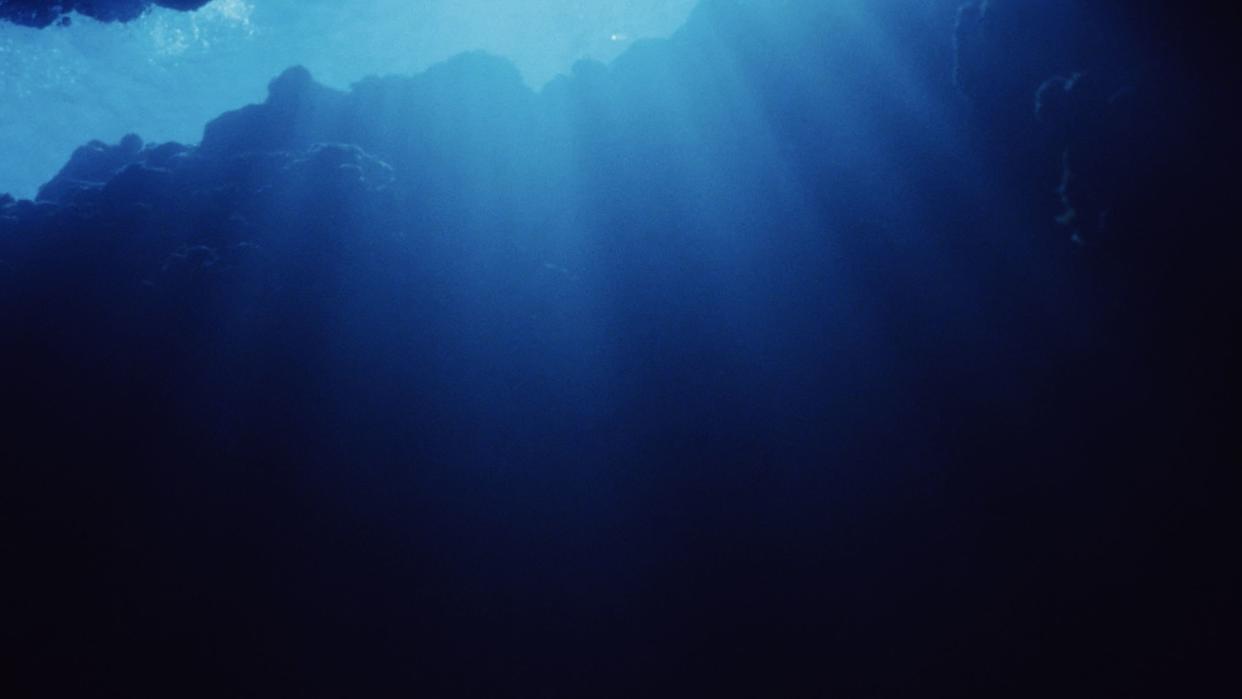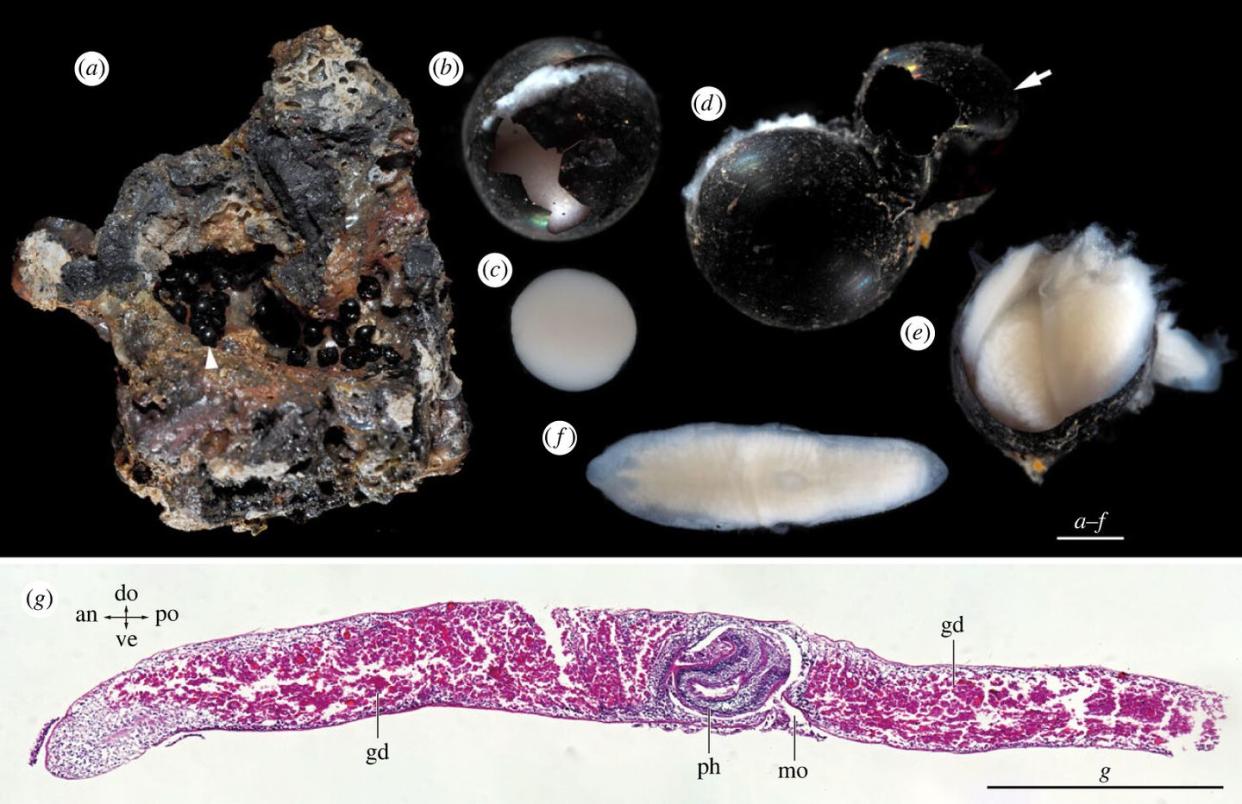4 Black Eggs Have Surfaced From the Dark Heart of the Ocean—With Alien Creatures Inside

During a robotic exploration of the the ocean’s abyssopelagic zone, scientists discovered never-before-seen jet black eggs attached to a rock.
After further study and DNA examination, the team discovered that the eggs belong to a flatworm—an animal usually associated with more shallow waters—previously unknown to science.
Though it lives in a much deeper environment, preliminary research concludes that this flatworm species is superficially similar to its more shallow-water living relatives.
A well-worn expression among oceanographers and others who explore the water depths of planet Earth is that we humans “know the surface of Mars better than our ocean floors.” Covering more than 70 percent of the world’s surface, oceans are notoriously difficult to study—not to mention pretty inhospitable to any creatures sans gills.
Case in point, scientists from Tokyo University and Hokkaido University in Japan recently stumbled across some mysterious jet black eggs while piloting a remotely operated vehicle (ROV) in the Pacific Ocean at a depth of roughly 6,200 meters (or 3.85 miles). This is the maximum depth of the abyssopelagic zone, which is the deepest layer of most of the ocean—hadopelagic zones are technically deeper, but only fill deep trenches. Any biological discovery in this zone is immensely important, as the life cycles of creatures living there are largely unknown.
Unsure what these eggs were, University of Tokyo marine researcher Yasunori Kano—who was at the controls of the ROV at the time—opted to retrieve a sample of the eggs for further analysis topside.

Egg capsules on rock fragment. [B] Partly opened egg capsule containing three spherical-stage flatworms. [C] Spherical-stage flatworm extracted from egg capsule. [D] Cracked egg capsule containing seven flatworms. [E] The same, half of egg capsule shell removed. [F] Flatworm extracted from egg capsule.' expand='' crop='original'][/image]
Although most of the eggs were torn and empty, at least four eggs remained intact, and Kano sent these undisturbed specimens to a team of invertebrate biologists at Hokkaido University. After taking a closer look, the team realized that these “eggs” were in fact cocoons containing a handful of flatworms.
“When I first saw them, as I had never seen flatworm cocoons (and I didn't know what cocoons look like), I thought they may be protists or something,” Hokkaido University’s Keiichi Kakui, who co-authored a study about the discovery in the journal Biology Letters, told IFLScience. “Under a stereomicroscope, I cut one of them, and a milky liquid-like thing leaked from it; after blowing the milky thing with a pipette, I found fragile white bodies in the shell and first realized that it was the cocoon of platyhelminths.”
This was a particularly surprising discovery, as we know absolutely nothing about abyssal flatworms—they’ve never been discovered at such immense depths before. In fact, the deepest flatworm observed before this discovery we found at around 5,200 meters (3.23 miles). However, that specimen was attached to a piece of wood, so scientists can’t be certain if the worms originated at that depth or sank there. Before that discovery, the deepest flatworm ever discovered were found at only around 2 miles, according to ScienceAlert.
After further DNA examination, the team confirmed that these creatures were a previously undescribed species of the phylum Platyhelminth. However, the paper also reports that though they represent “the deepest known record of free-living platyhelminths,” these deep sea residents appear to be superficially the same as their shallow-water living cousins and showed no drastic developmental differences.
While the ocean abyss is still shrouded in scientific ignorance, this discovery makes the knowledge of these dark depths a little brighter.
You Might Also Like
